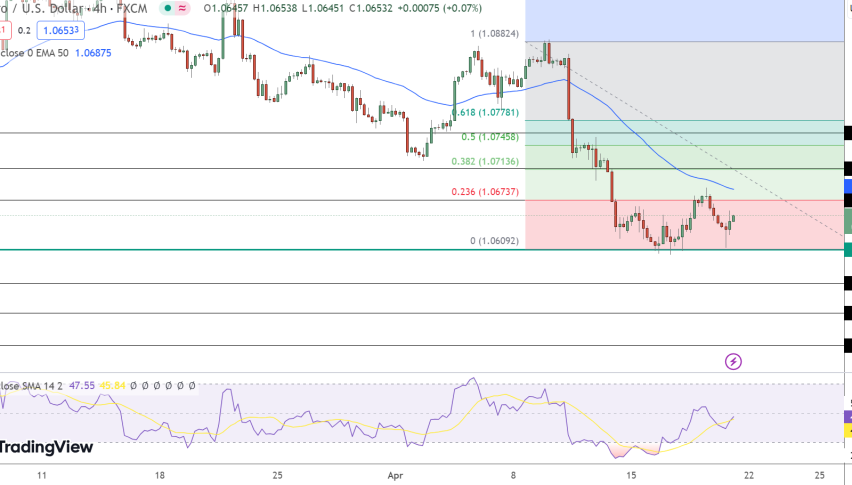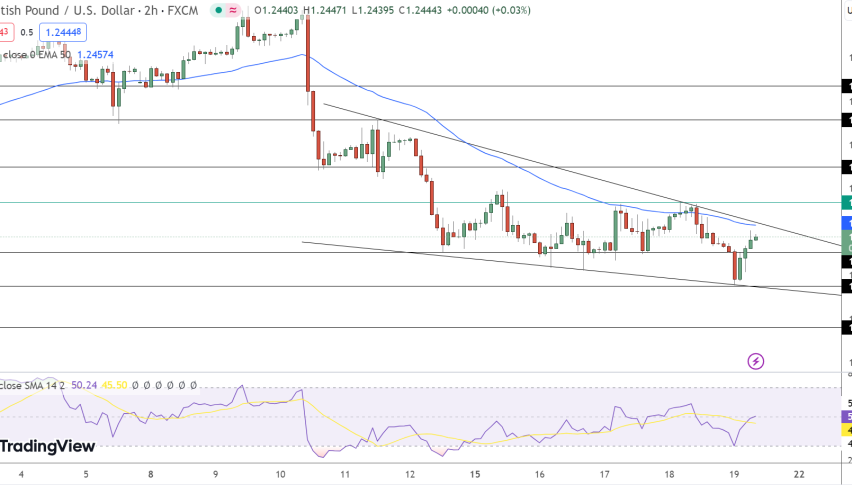
Weekly Outlook, Jan 18 – 22, 2021: Top Economic Events to Watch This Week
The broad-based US dollar is going to end this week on the bullish track, as investors started showing preference for safe-haven assets in the wake of a risk-off market sentiment. However, the gains in the US dollar seem relatively unaffected by Federal Reserve Chair Jerome Powell’s dovish comments indicating that interest rates would not rise any time soon. Meanwhile, the release of details of President-elect Joe Biden’s $ 1.9 trillion stimulus package failed to give any meaningful support to the greenback. However, the US dollar index has recovered after hitting its lowest level since March 2018 last week, as the prospect of additional stimulus weighed on US government bonds, which sent the benchmark 10-year Treasury yield above 1% for the first time since March.
Looking ahead into the coming week, the series of GDP and Unemployment Claims, along with Monetary Policy Statements and President-Elect Biden’s speech, could drive plenty of headlines to keep the markets on the move. The geopolitical tensions and coronavirus (COVID-19) headlines will also be closely followed across the ocean, as they could play a key role in determining risk levels in the market.
Top Economic Events to Watch This Week
1:- Gross Domestic Product (YoY) – Monday – 2:00 GMT
This data is typically released by the National Bureau of Statistics of China. It examines the gross value of China’s goods and services. This indicator represents the speed at which the Chinese economy is growing or shrinking. This economic event has a major impact on the Forex market, as the Chinese economy has a substantial influence on the global economy. High figures are seen as bullish for the CNY; conversely, low figures are seen as negative for the CNY.
Previous Release
ACTUAL: 4.9 %
DEV: -0.61
CONS: 5.2 %
DATE: 10/19/2020 02:00
2:- Consumer Price Index (MoM) – Tuesday – 7:00 GMT
This data is typically released by the Statistisches Bundesamt Deutschland, which examines the average price change for all goods and services purchased by households for consumption purposes. The CPI is considered as the key indicator to measure inflation and changes in purchasing trends. High figures are seen as positive or bullish for the EUR, while low figures are seen as negative (or bearish) for the Euro.
Previous Release
ACTUAL: 0.5 %
DEV: -1.58
CONS: 0.6 %
DATE: 01/06/2021 13:00
3:- Bank of Canada Monetary Policy Report – Wednesday – 15:00 GMT
The Bank of Canada publishes a study of economic changes in the Canadian economy. This report indicates signs of a new fiscal policy. Any changes in this report tend to influence the CAD. If the Bank of Canada demonstrates a hawkish outlook, it is considered bullish for the CAD currency; conversely, a dovish stance is seen as negative for the Canadian dollar.
ii) BoC Rate Statement:
This statement is the principal medium used by the Bank of Canada (BoC) to interact with investors with regard to monetary policy decisions, specifically those regarding interest rates. This statement contains the results of their decisions on interest rates, and commentaries about the economic conditions that influence their decision.
4:- BoC Press Conference – Wednesday – Tentative
The BOC Governor and Senior Deputy Governor typically hold this press conference after releasing the BOC Monetary Policy Report. The press conference has two parts. First, the prepared statement is delivered, then the conference is open to questions from the press. The questions usually lead to unscripted answers that create heavy market volatility. It is also worth mentioning that this press conference is available as an audio webcast on the BOC website.
5:- Employment Change – Thursday – 0:30 GMT
The Australian Bureau of Statistics typically releases this data, which measures the change in the number of employed people in Australia. In that way, an increase in the indicator has positive implications for consumer spending, which stimulates economic growth. Therefore, high figures are seen as positive or bullish for the AUD; conversely, a low figure is negative for the Aussie.
Previous Release
ACTUAL: 90 K
DEV: 0.57
CONS: 50 K
DATE: 12/17/2020 00:30
ii) Unemployment Rate – This data is typically released by the Australian Bureau of Statistics. It measures the number of unemployed workers divided by the total civilian labor force. Rate hikes indicate a lack of expansion within the Australian labor market, which in turn tends to weaken the Australian economy. Thus, a low reading is seen as positive or bullish for the AUD; conversely, a high figure is seen as negative (or bearish) for the Australian dollar.
Previous Release
ACTUAL: 6.8 %
DEV: -0.65
CONS: 7 %
DATE: 12/17/2020 00:30
6:- BoJ Monetary Policy Statement – Thursday – Tentative
This official monetary policy statement is released by the Policy Board of the Bank of Japan. It is the primary tool used by the BOJ to communicate with investors about monetary policy. After communicating the results of the committee’s vote on interest rates and other policy measures, the statement gives clues on future monetary policy changes. Economic conditions also influence their decisions. Thus, more hawkish than expected is seen as bullish or positive for the JPY.
7:- ECB Monetary Policy Statement and Press Conference – Thursday – 13:30 GMT
After the ECB’s economic policy decision, the ECB President presents a press conference about monetary policy. Her comments usually affect the volatility of the Euro and determine a short-term positive or negative bias. A hawkish outlook is seen as positive or bullish for the EUR and a dovish view is seen as negative or bearish for the Euro.
8:- German Flash Manufacturing PMI – Friday – 8:30 GMT
This data is typically released by Markit economics. It examines the European business conditions of the manufacturing sector. The manufacturing PMI is seen as the key indicator of business conditions and Germany’s overall economic condition, as the manufacturing sector dominates a large part of the total GDP. A high reading, above 50, is seen as bullish for the EUR, while a the low reading, under 50, is seen as bearish for the Euro.
Previous Release
ACTUAL: 58.3
DEV: -0.26
CONS: 58.6
DATE: 01/04/2021 08:55
ii) French Flash Services PMI:
This data is typically released by Markit Economics, based on a large number of business executives in private sector manufacturing and services companies. The data is normally released on the 3rd working day of each month. Each result is weighted according to the size of the company and its contribution to total manufacturing or services output, accounted for by the sub-sector to which that company belongs. Results are presented by questions asked, showing the percentage of respondents reporting an improvement, a deterioration, or no change since the previous month. A figure above 50.0 indicates industry development, whereas a figure below 50.0 shows industry contraction.
Previous release
ACTUAL: 49.1
DEV: -0.43
CONS: 49.8
DATE: 01/06/2021 09:00












